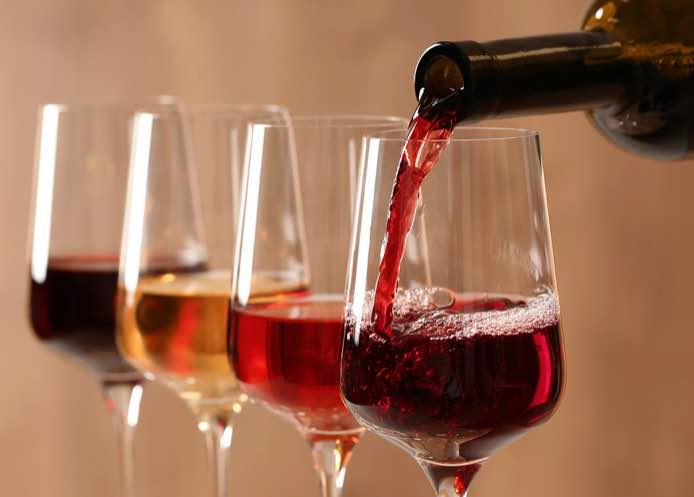Even casual wine drinkers know there is no such thing as a typical bottle of wine; there are hundreds of kinds of wine, and even the same wine tastes subtly different from one bottle to the next. When every small decision made in wine production affects the final flavor, it should be no surprise to discover that those decisions affect the carbon footprint as well. Estimates of the carbon embodied by a bottle of wine range from 80 grams to 1.28 kilograms of CO2. Definitive answers are hard to come by in the wine world, but a little information about the ways wine affects the environment can help you find the most sustainable wine that suits your taste.
Growing Grapes
Britain’s Ethical Consumer reports that grapes are the fruit with the highest environmental impact. A life cycle analysis of one organic wine determined that grape production contributed 39% of its carbon footprint. One of the most effective ways to reduce a vineyard’s environmental footprint is to step back – all the way to the choice of grape. Planting the variety of grape that is best suited to the existing soil and weather conditions will reduce the need for inputs of every kind and is the only way to achieve dry farming.
You’d have to be quite an expert to know if a wine variety suits its origin, but fortunately, sustainable certifications can tell you a lot about the inputs used to grow the grapes. Organic and biodynamic are the two most common certifications in viticulture, but there are many others, including the international Haute Valeur Environnementale(HVE). The environmental impacts for organic grape production result primarily from pruning waste and the fuel used by agriculture machinery. Composting and hand-harvesting can reduce those impacts. It might take some consumer research to determine if a particular vineyard uses these practices.

Fermentation
A winery’s impact mostly derives from the electricity powering its equipment and the emissions generated by the wine itself during fermentation. Sustainable certifications do not require wineries to use renewable energy. However, most wineries that do so – like Fetzer Vineyards – will advertise that fact on their packaging or websites. Until recently, there was no option to reduce the carbon emissions from the fermentation process itself. However, Spanish wine producer Torres is pioneering carbon capture technologies. Water use for irrigation is usually a bigger concern than processing, but water-saving systems used during processing can reduce the 5 liters of water used to make a liter of wine. Organic waste produced during processing should be composted. Although not required for certification, this is common on organic farms.
Bottles
Packaging is a major component of wine’s carbon footprint, accounting for 34% in one life cycle analysis and 38% in another. Both studies assumed the use of traditional glass bottles. Despite its high recyclability, glass is the least sustainable wine packaging option. Boxes, which are lighter and also recyclable, are more sustainable. Even greener options include bulk wine buying and (quelle horreur!) aluminum cans. If you can’t bear to pour your wine from anything but a glass bottle, at least look for a winery that uses lightweight glass.
Transportation
Although the importance of food miles is usually overestimated, when it comes to wine, you can dramatically reduce the carbon footprint by learning to love local vintages. A Napa Valley wine trucked to San Francisco emits 2.6 pounds of CO2 in transit; the same bottle trucked to Connecticut emits 5.7 pounds. Emissions from air shipments are the worst, followed by trucking; container ships have the least impact. For this reason, wines from Europe often have a smaller carbon footprint than those from the West Coast when drunk East of the Mississippi River.
Waste
Most life cycle analyses of wine do not include post-consumer waste disposal – wine wastage is a bigger issue. Most chefs advise against cooking with “corked” wine. But if you can’t bear to waste bad wine, there are ways to use it. Revisit your corking options to eliminate waste from cork taint. Regardless of packaging type, wine drinkers should make every effort to recycle their bottles, boxes, corks, and caps.
The Greenest Wine
To drink wine as sustainably as possible, look for a local organic or biodynamic certified vineyard that uses renewable energy and composts its pruning and processing waste. If you live in a climate that isn’t suitable for wine grapes, remember that the mode of transport is as important as distance in identifying the “nearest” green vineyard. Buy your wine in bulk, boxes, or cans rather than bottles. And always recycle your own wine waste.
The post The Wide World of Sustainable Wine appeared first on Earth911.








